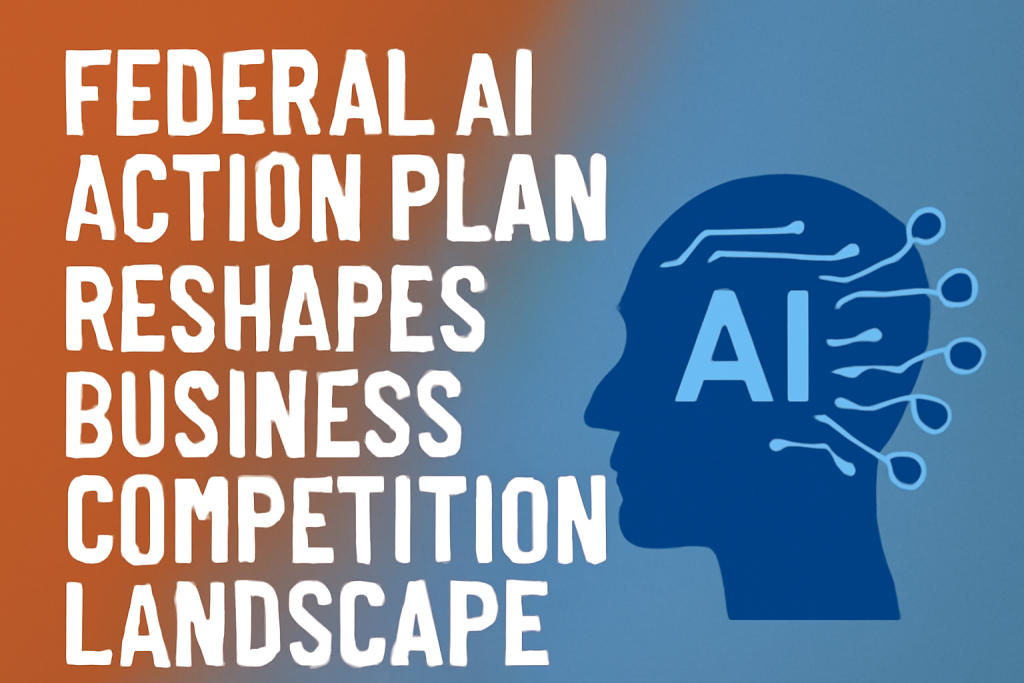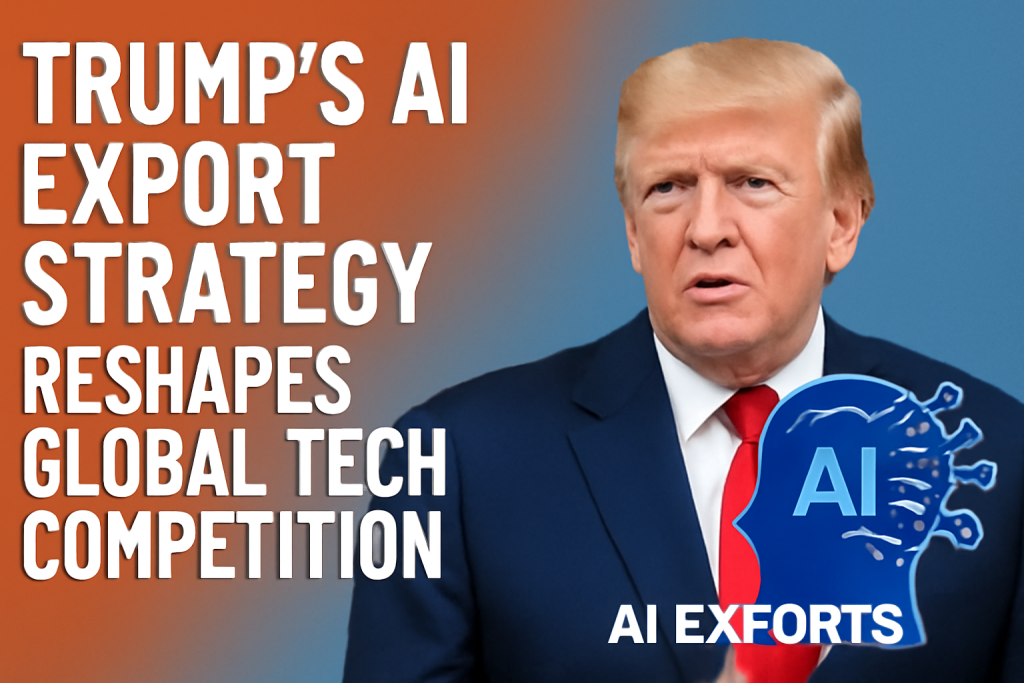The federal government launched America’s most aggressive AI policy initiative on 23 July 2025. The comprehensive AI Action Plan promises to eliminate regulatory barriers and supercharge private sector innovation.
This marks a decisive shift that creates immediate competitive advantages for forward-thinking businesses using artificial intelligence.
The plan directly impacts how companies compete in AI markets. It offers new funding opportunities while reshaping regulatory requirements across all sectors. Smart business leaders are already adjusting their business strategies to capitalize on these changes.
Why Strategic Location Matters More Than Ever
The plan ties federal funding to state regulatory approaches. States with fewer AI restrictions will receive more federal support. This creates a clear competitive advantage for companies choosing the right locations.
Businesses operating in deregulation-friendly states gain access to expanded grants and resources. Companies in restrictive states may find themselves at a disadvantage. Location decisions now carry greater strategic weight than before.
The policy encourages states to eliminate AI barriers by making funding contingent on compliance. This creates a domino effect that benefits businesses nationwide over time.
Open Source Strategy Creates Cost Advantages
The plan strongly promotes open-source AI models over proprietary systems. This preference creates significant cost savings for businesses willing to adapt their strategies.
Companies can modify public AI models to meet specific needs without major licensing expenses. Open-source adoption reduces development costs and speeds time to market. Businesses gain flexibility to customize solutions without vendor lock-in constraints.
However, companies must carefully review licensing terms and security implications. The government’s open-source focus levels the playing field for smaller companies. Hey, can now access advanced AI capabilities previously available only to tech giants.
Infrastructure Investment Accelerates Business Growth
The plan prioritizes domestic AI infrastructure development across multiple areas.
- New data center construction will expand rapidly with streamlined approval processes.
- Semiconductor manufacturing receives significant federal support to reduce foreign dependencies.
- Power grid modernization addresses AI’s massive energy requirements.
These infrastructure improvements directly benefit businesses deploying AI systems. Companies gain faster project approvals and improved access to domestic supply chains. However, the focus on US-made technology may increase procurement costs initially. Businesses must reevaluate global supply chain strategies to align with new priorities.
Workforce Development Creates Talent Pipeline
Federal investment in AI education and training programs expands significantly. Companies gain new opportunities to collaborate with educational institutions. Government-funded training programs help businesses develop skilled workers more affordably. The plan creates apprenticeship programs specifically focused on AI skills. Businesses can access subsidized employee training and retraining programs.
This helps companies build AI capabilities without bearing full training costs. However, competition for AI talent will intensify as demand increases nationwide. Companies must enhance recruitment strategies and invest in employee retention programs.
Export Strategy Reshapes Global Markets
The plan aims to make America the leading AI technology exporter. Export controls tighten around semiconductors and manufacturing equipment while expanding market access for allied nations. This creates new opportunities for US companies in friendly markets.
Tighter controls on semiconductor exports affect multiple industries beyond chip manufacturing. Data centres, telecommunications, automotive, and aerospace sectors face potential hardware shortages. Companies must prepare for higher costs and compliance requirements.
The plan establishes new programs to facilitate AI export deals that meet security requirements. This coordination helps American companies compete in global markets.
Managing Synthetic Media Risks
The plan identifies AI-generated content as a key security concern. New standards will address deepfakes and other synthetic media threats. Companies in media, finance, and technology face the highest regulatory impact.
Businesses must strengthen their ability to detect and respond to AI-generated misinformation. This affects brand reputation management and information security strategies. Companies should prepare for new verification requirements as standards emerge.
Strategic Implications for Business Leaders
The AI Action Plan creates both opportunities and challenges for every business sector. Companies aligned with federal priorities gain competitive advantages through funding and regulatory relief. Those opposing the direction may face reduced access to federal resources. Businesses must monitor evolving state and federal requirements closely.
Export control changes affect international operations and supply chain strategies. Investment in AI capabilities becomes more critical for maintaining competitiveness. The plan signals long-term federal commitment to artificial intelligence leadership.
Companies that adapt quickly to new policies will gain sustainable competitive advantages. Those that delay risk falling behind in the rapidly evolving AI landscape. Success requires proactive strategy adjustment and continuous policy monitoring.
The AI Action Plan fundamentally changes how businesses compete in technology markets. Smart leaders are already positioning their companies to benefit from these historic changes.


